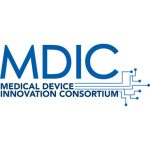One of the largest technology companies in the U.S. is now also planning to get into 3D printing. The management of the IT giant Hewlett Packard anticipates that the world market for 3D printers and related software and services will grow from $ 2.2 billion in 2012 to $ 11 billion in 2021. In turn, experts from the American market research company International Data Corporation (IDC) are assuming that this year, 67 percent more 3D printers are going to be sold than in the previous year. The medical field is an area of application with great potential – all the way to the idea of creating entire organs with 3D printers in the future.
It is not surprising, therefore, that 3D printers will also play an important role at this year’s COMPAMED, International Trade Fair, High tech solutions for medical technology. Held parallel to MEDICA, the world’s largest medical trade fair, COMPAMED (November 12 – 14, 2014 in Düsseldorf, Germany), will feature about 750 exhibitors on about 140,000 square feet of net floor space – a new record in the show’s history which started in 1992.
3D printers represent an exciting combination of material and process technology, says Horst Giesen, Director of COMPAMED + MEDICA.
As a joint effort, scientists of the universities of Harvard, MIT, Sydney and Stanford have put together a comprehensive research report that experts consider a great leap in the field of medical 3D printing. By their own account, the study represents a breakthrough of how 3D tissue with blood vessels can be printed. The supply of blood is crucial for the function of organs, ensuring a sufficient supply of oxygen as well as removing waste and toxic substances from circulation. In the report, a solution is described to scientists on how blood vessels can be made with a 3D printer. For this, a special printer is used that can print out the smallest fibers possible, connected with each other. This type of printing almost corresponds to the vessel structure of a human organ. Subsequently, the fibers will be coated with human cells and a special protein that is supposed to stimulate cellular growth.
German researchers from the Technical University of Berlin and the German Heart Center in Berlin are also working on 3D printer solutions. The vision of Professor Hartmut Schwandt, Head of the 3D laboratory at TU Berlin, entails printing real heart valves from human cells. Based on computer tomography (CT), a heart valve structure could be custom printed for the respective patient; the structure can then be populated with the body’s own cells – this is how a real heart valve could be formed. For the structure, a special synthetic material is provided that will be decomposed by the body, but initially maintains the correct shape of the construction. According to Professor Schwandt, the required cell material will be generated from a tissue donation and cultivated for several months in a bioreactor by means of a tissue engineering process. Afterwards, it should be ready for colonizing the basic heart valve structure.
Energy supply – also an exciting topic in the field of medicine
Currently, microsystem technology (MST) is also increasingly moving into focus for implants, measurement technology that is worn on the body (so-called “wearables”), and for compact medical technology – for this, not only the necessary sensor technology, which provides for functionality, is required, but also a safe energy supply in particular. Corresponding batteries and accumulators that can serve both as the primary energy source and also as a backup system in the event of power failures have to be especially efficient, small and light.
Along these lines, the British company Accutronics is showing a new development at COMPAMED 2014 that has just been awarded a £ 100,000 prize by the United Kingdom’s innovation agency for its high-performance battery “Chameleon.” Thanks to an integrated microchip, the solution enables intelligent communication between the battery and the charging device. Voltage and power are then only supplied by means of the charging device if required. This prevents not only overcharging, but also saves on energy. The intelligent charging devices are flexible with regard to both design and use. In this way, they can be equipped with single or multiple charging compartments to handle alternating or direct current. At the first onset, the new battery and charging device series, CMX, is provided for use in ventilators, x-ray detectors, nebulizers, patient monitors and data recording instruments in the field of endoscopy.
The COMPAMED SUPPLIERS FORUM offers topics along the entire process chain. One of them includes MR compatible instruments (MR = magnetic resonance tomography), such as a guide wire and the first controllable catheter system that is suitable for MR presented by EpFlex. The instruments are designed as disposable products so no cleaning of the components is required and reliable functionality is guaranteed.
New applications for the smallest camera in the world
At the COMPAMED SUPPLIERS FORUM, Martin Wäny will provide information on other possibilities of application for the smallest camera in the world, the “AWAIBA NanaEye.” The size of the digital camera module is exactly 0.04 by 0.04 by 0.06 inches – it is not even as big as the head of a pin and is used in the field of endoscopy among other things. Individual chips make smaller, flexible endoscopic units possible. Stereo and multi-cameras allow 3D visualization and images at multiple angles. Other lectures will deal with the wireless transmission of real-time video data, which is already a reality in several hospitals, and with a complex process to manufacture sterile cloths.
Numerous companies will present innovations in micro-optics, laser technology and diverse imaging processes. Principally, for several years, the optical topics have progressively been moving into the product market. This is due to the continuously increasing requirements for accuracy and precision. Furthermore, optical processes, by means of minimally invasive diagnostics or imaging for example, have proven to be patient friendly. Another currently significant field includes microfluidics in various forms such as lab-on-a-chip, cells-on-a-chip and organs-on-chips. Based on the same microfluidic processes that have made lab-on-a-chip possible, new developments are in sight. Using microfluidic chips, physiological processes taking place in the body can be simulated. In so-called “organs-on-chip”, living cells are cultivated that react in exactly the same was as a natural organ. With this for example, the effect of substances or toxins on the body can be tested.
Lab-on-a-chip systems on the way to clinical trials
The institute for microtechnology and information technology of the Hahn-Schickard-Gesellschaft (HSG-IMIT) shows what possibilities lab-on-a-chip systems offer. The disposable prototype made of synthetic material is about the size of a compact disk. Named “LabDisc”, the HSG-IMIT has developed a technology platform where immunoassays and nucleic acid analyses can be carried out. Time-critical diagnoses of inflammatory responses triggered by bacteria in the case of newborns and the quality control of foodstuffs and drinking water are the main issues. HSG-IMIT has built up a pilot line with batches comprising 10,000 to 50,000 tests. Such quantities are a pre-requisite for proving the efficiency of the new technology in clinical studies.
maxon medical, a specialist for high-precision drive solutions in the field of medical technology, is participating in COMPAMED for the 19th time. “Today, this field of application represents our most important area, followed by industrial automation, automotive, and aerospace. Around 45 percent of our drive components are used in insulin pumps, apnoea units, prostheses, ophthalmic surgery units, power tools, irradiation facilities and surgical roots”, explains Albert Bucheli, Manager of marketing support at the Swiss company. The multileaf collimator for intensity modulated radiotherapy, a new technology to fight cancer, shows what benefits precision drives can achieve. Drives made up of over 100 maxon motors installed within a minimum amount of space – the multileaf collimator of the radiation field changes shape, rotating around the patient, adjusting to the respective shape of the tumor. In other words: The motors ensure that the opening for the beam always corresponds exactly to the shape of the tumor. This makes efficient and comprehensive radiotherapy possible that is at the same time gentle, even in the case of vital regions of the body. Its use minimizes hot spots and allows for homogeneous modulation of the radiation dose applied without damaging the surrounding healthy tissue.
Whether new materials for anti-bacterial coatings, for flexible and stretchable substrates in the field of wearables or for high-performance ceramics in artificial joint components, whether complete packaging lines for sterile products, multi-sensor systems or individual parts and components – COMPAMED is the central supplier platform, displaying all aspects of medical technology requirements. Click here for more information.






